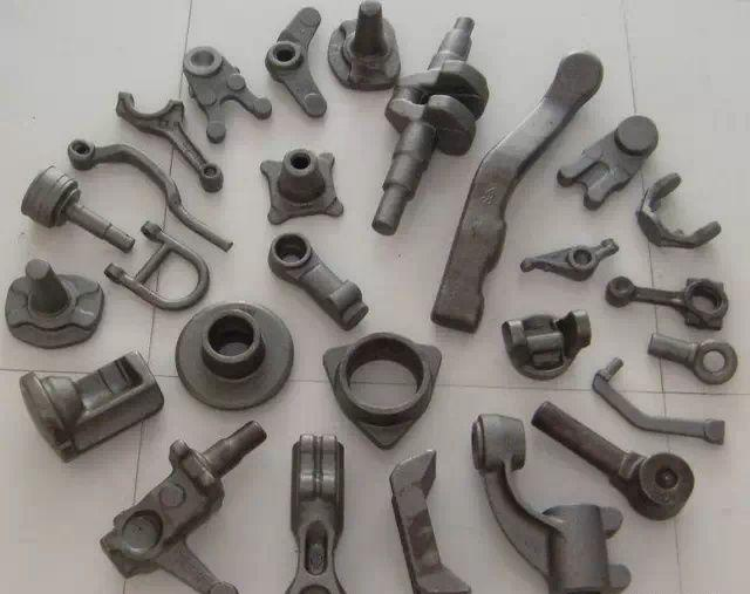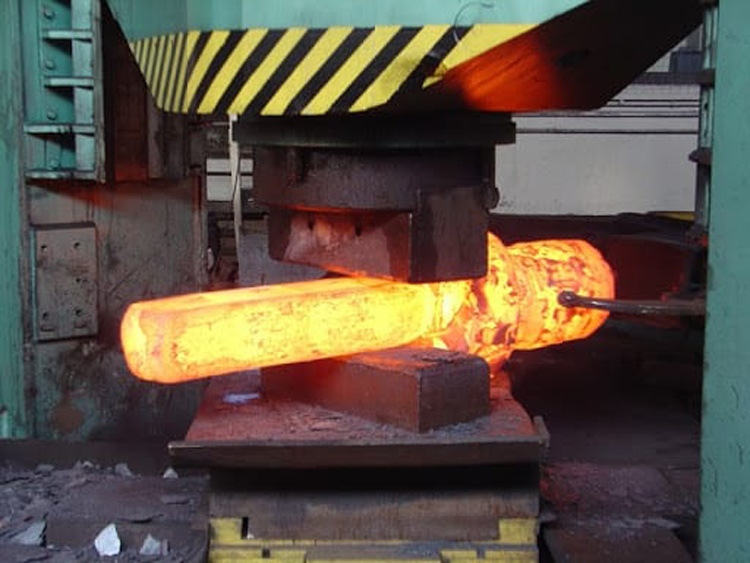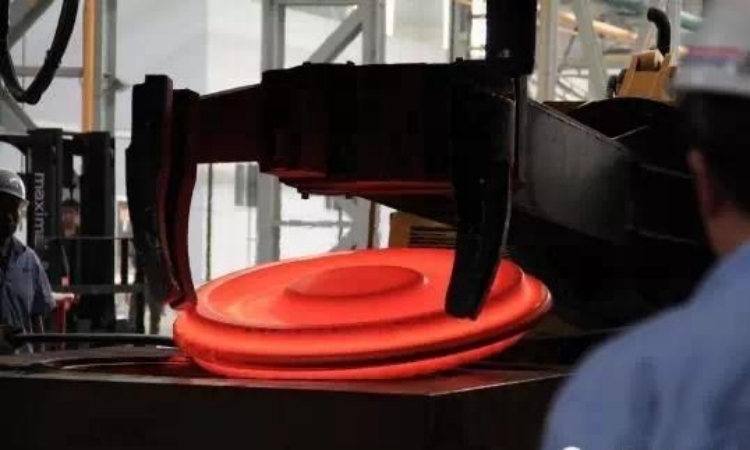What is the difference between 201 stainless steel and 304 stainless steel?
 What is the difference between 201 st...
What is the difference between 201 st...During the automotive manufacturing process, forging processing methods are widely used. With the advancement of science and technology, it is increasingly widely used for the continuous improvement of workpieces, high efficiency, low cost, low energy consumption, high quality and other advantages and other precision forging technologies. According to the variant temperature of the metal plastic mold, the precision cold forging forming can be divided into cold forging forming, temperature forming, sub-heat shaped, heat precipitation, and the like, the production of automotive parts include: car clutch engagement ring gear, automotive transmission Input shaft part, bearing ring, car isometric universal skate series, car differential gear, front axle, etc.

Forging is one of two major components of a processing method having a certain mechanical properties, a certain shape, and size forging to obtain a plastic modification to obtain a mechanical properties, a certain shape, and a size forging, forging (forging and stamping).
Through the forging energy eliminates the defects such as cast loosening during the smelting process, optimizing the microstructure structure, while maintaining a complete metal streamline, the mechanical properties of the forgings are generally better than the same material. An important part of the relevant machinery is high, the working conditions are severe, in addition to a simple shape, profile, profile, or welded material, and forgings.
Different according to production tools, forging technology can be divided into free forging, module forging, rock and special forging.
1)Free forging: refers to a simple generic tool, or on the forged device, the blank is applied directly to the blank, so that the blank produces deformation to obtain the desired geometry and internal quality forgings. Processing method.
2)Dimensional forging: refers to a metal blank to obtain a forging for forging in a forged pattern having a certain shape. The die forging can be divided into hot mold forging, warm forging and cold forging. War for forging and cold forging is the future direction of die forging, and also represents the level of forging technology.
3)RC: Refers to the production of a different diameter annular part by a dedicated equipment mill, which is also used to produce rotary parts such as automotive wheels, train wheels.
4)Special forging: including roll forging, wedge rolling, radial forging, liquid die forging, etc., which are compared to part of certain special shapes. For example, roller forging can be used as an effective preform process, which greatly reduces subsequent forming pressure; wedges can produce parts such as steel balls, drive shafts; radial forges can produce large gun tanks, step axes, etc. Forgings.
According to the forging temperature, the forging technology can be divided into hot, warm forging and cold forging.
The start recrystallization temperature of the steel is about 727 ° C, but it is generally used as a dividing line, which is hot forged; between 300 to 800 ° C, called warm forging or semi-heat forging, forged at room temperature. Cold forging. Forging for most industries is hot forging, warm forging and cold forging is mainly used for forging, warm forging and cold forging of parts for automobiles, generic mechanics.
Based on the mode of movement of the forging, forging can be divided into a wrought roll, swing forging, roll forging, wedge rolling, rolling ring and oblique rolling.
Forging materials are mainly carbon steel and alloy steel of various components, followed by aluminum, magnesium, copper, titanium and other alloys, iron-based high-temperature alloys, nickel-based high temperature alloys, deformation alloys of cobalt-based high-temperature alloys also use forging Or the rolling mode is completed, but these alloys are relatively narrow due to their plastic regions, so the forging difficulty will be relatively large, and the heating temperature of different materials, the opening forging temperature and the final forging temperature have strict requirements.
The original state of the material has a bar, ingot, metal powder and liquid metal. The ratio of the cross-sectional area and the deformation of the metal before deformation is referred to as forging ratio.
Correctly select forging ratio, reasonable heating temperature and post-insulation time, reasonable starting temperature and ending temperature, reasonable deformation amount and deformation speed have a great relationship with the product quality and cost reduction.

Free forging refers to a simple generic tool, or on the forging device, directly applies an external force to the blank between the subvolate, causing the blank to deform the desired geometric shape and the internal mass forging. Processing method. Forgings produced by free forging methods are called free forgings.
Free forging is based on forging forging batch, and forging the billet, the billet is formed by a forging device, a hydraulic machine, and a qualified forging. The basic processes of free forging include upset, untenited, punching, cutting, bending, twisting, missed, and forging. Free forging is hot forging.
The free forging process includes a basic step, auxiliary process, a finishing process.
Basic processes of free forging: upset, untenited, punching, bending, cutting, twisting, missed, and forging, the most commonly used in actual production is the three processes of upset, unute, and punching.
Auxiliary process: pre-deformed procedure, such as pressure jaws, pressure steel ingot edge, shoulder, etc.
Fixing process: Reduce the process of surface defects of the forgings, such as removing the surface of the forging surface unevenness and shaping.
① Forging flexibility, it can produce small pieces of less than 100kg, and we can produce heavy-duty pieces of larger to 300t or more;
② The tool used is a simple general tool;
③ Forging shaping is gradually deformed by the billet subregion, and thus, the tonnage of forging the forging equipment is much smaller than the model forging;
④ Low requirements for the accuracy of the equipment;
⑤ Short production cycle.
① Production efficiency is much lower than model forging;
② The sleeve is simple, the size is low, the surface is rough; the labor intensity of workers is high, and the technical level is also high;
③ It is not easy to achieve mechanization and automation.

Dimensional forging means forging a forging forging by using molds on a special die forging device. This method has precise size, small processing margin, and has a high complex productivity.
Different categories according to the equipment used: Hammer Dimension Forging, Crank Pressure Machine Operation, Flat Forging Machine Sold Forging and Friction Press on Machine.
The most commonly used equipment in the hammer is a steam-air mold forging hammer, an anvil hammer and a high speed hammer.
Forging mode: Different categories of die forging and blank die according to its function.
① Pre-forward molding: The role of pre-forwarding is to deform the blank to the shape and size close to the forging, so that the metal is easily filled with the sizes of the forgings when carrying out. For the simple forgings or small batch, no precangle is not set. The rounded and slope of the pre-forward mold is much larger than the final slender, and there is no flying slot.
② Finishing of the die: The role of final forging is to make the blank last deformed the shape and size required for forgings, so its shape should be the same as the shape of the forgings; The size of the forging pattern should be enlarged than the forgings. The shrinkage of the steel forging is 1.5%. In addition, there is a flying groove along the four-week side of the module to increase the resistance of the metal flowing out from the mold, which causes the metal to be filled with the molten, while accommodating excess metal.
For a complicated forging, in order to make the blank shape substantially conform to the shaped shape, it is necessary to pre-blank in the blank die in order to make the metal can be rationally distributed and fully filled with the fencing.
① High production efficiency. When the die forging, the metallic deformation is carried out in the mold, so it can achieve the desired shape faster;
② Can forge integrated forgings, and make metal flow lines more reasonable, improve parts life;
③ The size of the die forging is more accurate, the surface quality is better, and the processing margin is smaller;
④ Save metal materials and reduce cutting workload.
⑤ Under enough conditions, the parts cost can be reduced.
① The weight of the die forging is limited by the general die forging equipment, mostly below 7okg;
② The manufacturing cycle of forging mold is long and the cost is high.
③ The investment cost of the die forging equipment is more free.

Roller forging means that the blank is plastically deformable with a pair of oppositely rotatable sector, thereby obtaining the forging process of the desired forgings or forging blanks.
Roll forging deformation is complex three-dimensional deformation. Most of the deformed materials flow along the length direction, which increases the length of the blank, and the lateral flow of a small portion of the material increases the width of the blank. The cross-sectional area of the blank root in the roll forging is constantly decreasing. Roller forging is suitable for unblocking, slab chips, and deformation processes such as distribution of materials in length direction.
Roller forging can be used to produce links, twist drills, wrenches, staples, hoes, hoe and turbine leaves. The roll forging process is gradually deformed by the principle of rolling forming.
Compared with ordinary die forging, roll forging has a simple device structure, stable production, vibration and noise, easy to achieve automation, high production efficiency.
Tire die forging is a forging method in which the free forging method is used to make the billet, and then it is finally formed in the tire mold. It is a forging method between free forging and die forging. There are few die forging equipment, and most of them are free forging hammers that are widely used in small and medium-sized enterprises.
There are many types of tire molds used in tire mold forging. Commonly used in production are: mold drop, buckle mold, sleeve mold, cushion mold, mold clamping, etc.
Closed barrel dies are mostly used for the forging of rotary body forgings. For example, gears with bosses on both ends are sometimes used for forging of non-rotating body forgings. Closed barrel die forging is a flashless forging.
For tire die forgings with complex shapes, it is necessary to add two half-dies (that is, add a parting surface) to the barrel die to make a combined barrel die, and the blank is formed in the die cavity composed of the two half-dies.
The lamination film usually consists of two parts, the upper and lower molds. In order to make the upper and lower dies fit together and prevent the forgings from shifting, guide posts and guide pins are often used for positioning. Clamping is mostly used to produce non-rotating forgings with complex shapes, such as connecting rods, fork forgings, etc.
① Since the blanks are formed in the mold, the sized sizes are more accurate, the surface is relatively smooth, and the distribution of streamline tissue is reasonable, so the quality is high;
② Forged forging forging the shape of the fetal model is more complex; since the interstitial shape is controlled by the modal control, the blank is formed faster, the productivity is 1 to 5 times higher than free forging;
③ small balances, and thus the processing margin is small, which can save metal materials and reduce machining workers.
① Need a large forging hammer with a tonnage;
② Minute forgings can only be produced;
③ The life of the fetal model is low;
④ Generally, it is generally carried out by manpower, and therefore the labor intensity is large;
⑤ Forging forging in the production, small batch forging forging.
 What is the difference between 201 st...
What is the difference between 201 st... Why is 316 stainless steel better tha...
Why is 316 stainless steel better tha... 400 series stainless steel science
40...
400 series stainless steel science
40... How to distinguish the processing tec...
How to distinguish the processing tec... Non-standard design materials of bras...
Non-standard design materials of bras... What type of titanium alloy does Tc4 ...
What type of titanium alloy does Tc4 ...